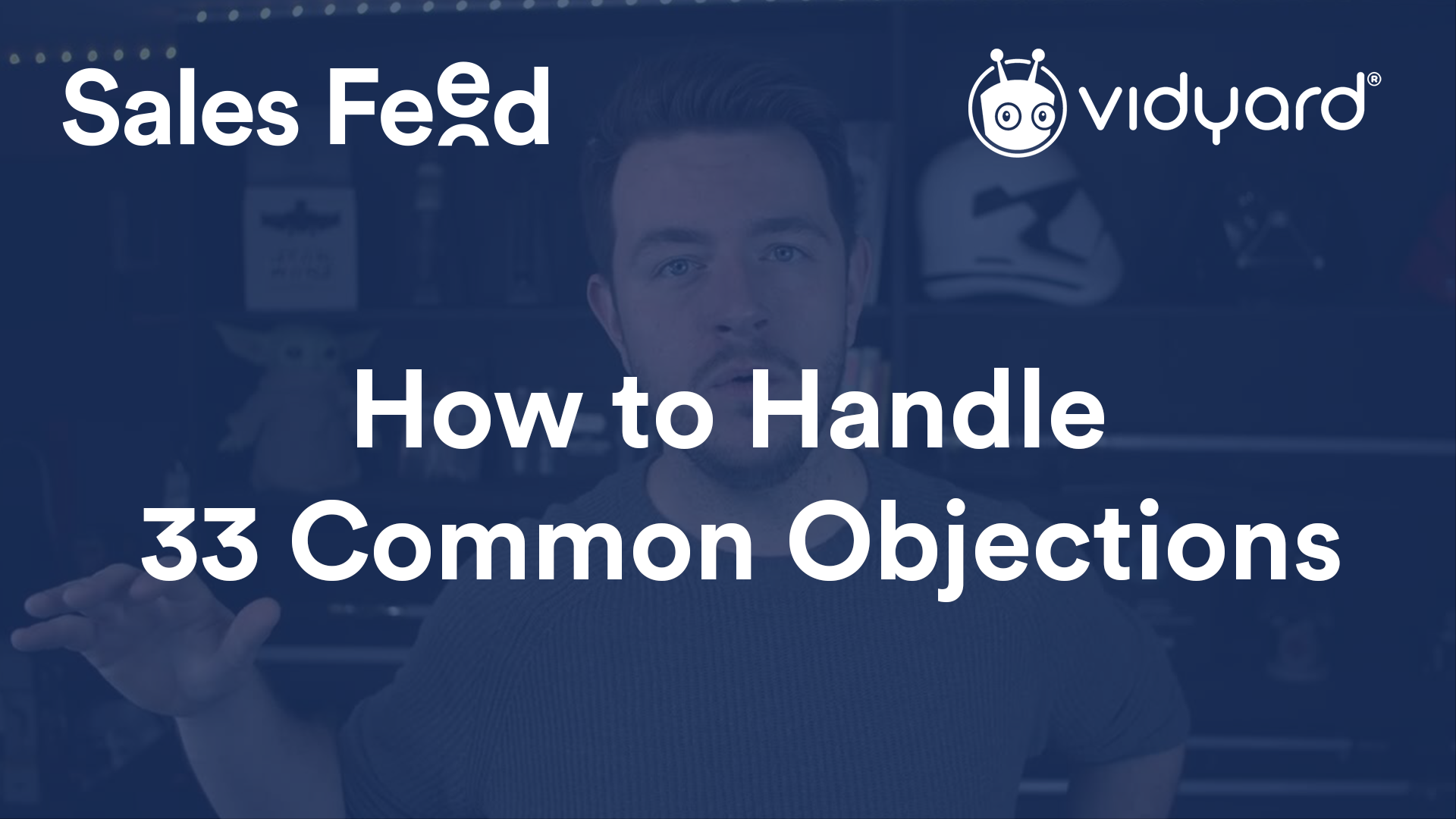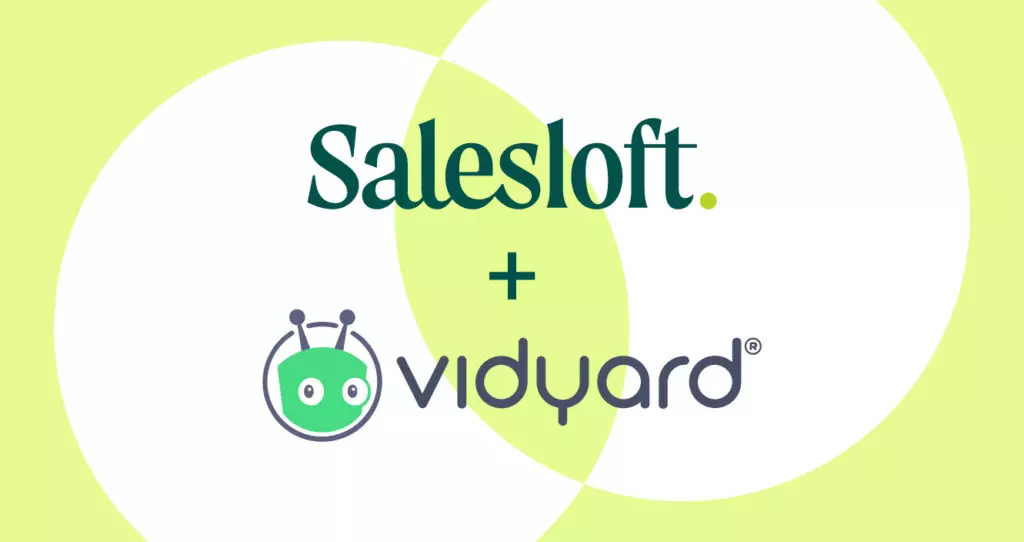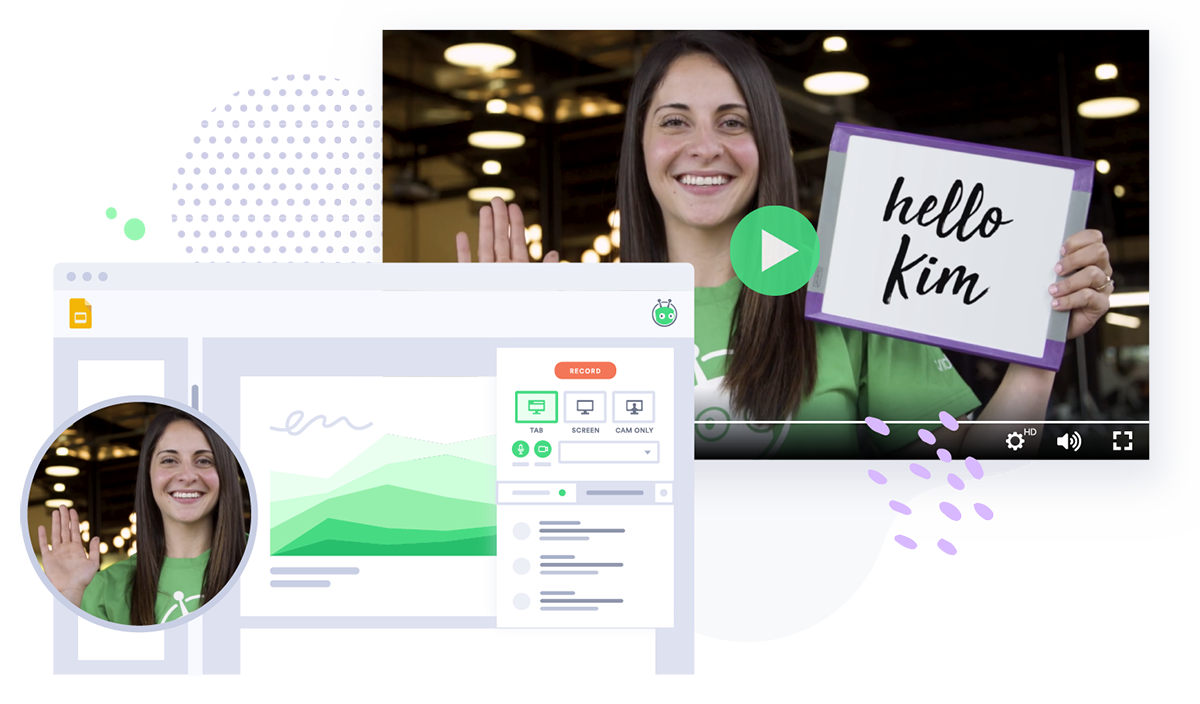33 Common Sales Objections and How to Respond to Them
August 11, 2023·16 min read
Facing objections in sales comes with the territory, but it doesn’t make them any less painful. Learn how to overcome the most common sales objections the right way.
You do your research. You bravely pick up the phone. You make the first sales call of the day…and on the other end of the line, you’re met with a crushing sales objection that stops you dead in your tracks.
Like a sweet little deer caught in headlights, you freeze and fumble to make your next move—or maybe they just hang up on you.
Facing and overcoming sales objections is part of the gig. But that doesn’t make it any less complicated (or excruciating) to face every day.
We want to make your sales life a little easier. We tapped our expert Sales Feed team to round up 33 of the most common sales objections and how you can respond to each one in a way that’ll push the conversation forward.
- Contents
- What is a Sales Objection?
- What Are the 4 Major Sales Objections?
- How to Handle Common Objections in Sales Calls
- Overcoming Budget-Related Sales Objections
- Handling Resourcing-Related Sales Objections
- Overcoming Product-Related Sales Objections
- “Not the Right Person” Sales Objections
- Handling Objections in Sales with Ease
What is a Sales Objection?
For those new to the game, a “sales objection” is a blocker you face from the sales prospect on the other end of the phone call, email, InMail, etc.
Some sales objections are totally valid, while others are just plain harsh. A buyer can use an objection as a negotiation tactic, or maybe they’re just trying to tell you they aren’t interested in what you have to offer.
What Are the 4 Major Sales Objections?
When you break it down, every customer objection under the sun generally fits into one of these four categories:
- “Need” objections. Your product just isn’t what the prospect needs right now…or you haven’t done a good enough job of explaining the product’s value in a way that makes it feel like a “need”.
- “Urgency” objections. The prospect thinks that right now just isn’t the right time for your product.
- “Trust” objections. The prospect just doesn’t trust your product (or you) enough to commit.
- “Price” objections. The product is out of the prospect’s price range.
No matter which of these four types your prospect’s objection fits into, you can bust that blocker and feel confident about your next outreach call.
Rather watch than read? The Sales Feed team shares rapid-fire examples of how to handle objections in sales calls like a pro—both the right and the wrong way. With a little help, you’ll be ready to take on ANY sales objection that comes your way and come out on top.

How to Handle Common Objections in Sales Calls
33 is a lot of objections! Let’s start with the most general or common sales objections you’re likely to face when a prospect tries to blow you off, and the rebuttals you can present in order to squash them.
1. Just “No”
A straight-up “no” or “we’ve decided no” is a common (but tough) one. What is the best way to handle this objection? Try this: “I appreciate you telling me. How did you decide that?”
If it’s something that you can influence and change, shoot your shot. If not, it’s time to let it go, as no amount of persuading will likely make them change their mind. You can thank them for their time and figure out what you can do better for the next potential customer.
2. “Take Me Off Your List”
Sales and marketers both hate this one—it’s the dreaded “unsubscribe”. It’s usually delivered sternly (or in all caps) by the recipient. It seems simple enough, but a straight-up “Sure, you’ll never hear from me again” will suffice.
Objections like these are good reminders to stop wasting time on people who don’t intend to buy from you. Instead, thank them for their time and focus your efforts on more qualified prospects. Ensure you have a system to remove them from future emails and automated workflows. Ultimately, it’s better to have fewer engaged prospects than many unengaged (and crusty) ones.
3. The Hang Up
Click! That’s the sound of your dreams being crushed. The next time it happens, try this trick: Quickly call back and try, “Hey, it seems like we got disconnected.” It’s not guaranteed to work, but it’s at least worth a go.
We like to call this being “pleasantly persistent.” Keep pushing and, more importantly, stay positive! You never know what might happen.
4. “I’m Busy”
Try this: “I’m with you, [name], and if you’re like any of my other customers in [industry], you’re probably always busy. Would it be fair to ask for 20 seconds to explain what this is about? If you find it irrelevant, then I can make sure I don’t disturb you again.” (Remember to keep it light-hearted!)
Knee-jerk objections like “I’m busy” or “I’m in a meeting” are often a symptom of a bigger problem: The pitch you serve up front didn’t resonate with them, and it didn’t stand out from every other sales call they’ve ever gotten.
Trying different cold call openers could help in these situations. Give one of the openers below a go:
- A permission-based cold call opener: “You’re not expecting my call. Do you have a moment? This will be brief.”
- An open-ended cold call opener: ”Hey, I understand you have a lot of calls that want to talk to you about these two things that are really affecting the market right now. This (trend/observation) and (trend observation). Which one of these is affecting you right now?”
- A wild-card cold call opener: “This is a cold call. Do you wanna roll the dice with me?”
Check out our full cold-calling guide for even more tips for breaking through.
5. “Not Interested!”
With these brush-off objections, sometimes it’s easiest to validate them and use them to adjust your opener for your next call.
Try this: “When you say you’re not interested, is that because you believe that things can’t be done any better than you do them currently, OR is it because you get like 1,000 cold calls a day and you just want to get rid of me?”
When a prospect says they’re not interested, it’s important to try and get to the why. It can be invaluable background for your future outreach.
6. “Where Did You Get My Number?”
Honesty can sometimes be the best answer, and that candor might even keep them on the line. Try something like this objection response:
“I spotted your profile on LinkedIn, and I noticed that you might be facing a few of the challenges that we help our customers address, so I used our data provider (i.e. ZoomInfo) to get your details and tried giving you a call. I’d be happy to reach out to them on your behalf and get them to take down your number. However, while I’ve got you, would you be curious enough to know why I went through all of the efforts just to try and have a conversation with you?”
7. “Is This a Sales Call?”
Again, straightforward honesty (plus a little confidence) can work.
To handle this objection, try a simple “Yes, it is. Do you have a minute?”
This enables the conversation. Once the convo has started, then you can get into your pitch and how you might be able to help them. If they don’t seem interested, don’t beat a dead horse—politely thank them for their time and move on.
8. “Send Me an Email”
This is another typical brush-off response you’ve likely faced. And if you go ahead and send that email, it’s likely not going to get read, and you’re probably wasting your time.
Before dropping off the call, try a response like this one: “I can absolutely do that, but before I do, I’d hate to clog your inbox with something totally irrelevant. Would it be fair to take 30 seconds now to see if this is something that’s relevant to you? If it’s not, I can skip the email and any other follow-up as well?”
By giving the person an option to opt out, they might just give you the benefit of the doubt and agree to give you a chance to talk. If not, and you do send that email, maybe try recording a video message referencing your quick call. Seeing your face in a thumbnail and recalling the earlier phone conversations can grab their attention and make them more inclined to actually reply.

 Learn how to craft the best email subject lines, including writing tips and an inspiring list of 40+ examples. Read the Guide
Learn how to craft the best email subject lines, including writing tips and an inspiring list of 40+ examples. Read the Guide 9. “Let Me Think About It”
When you get this one, call it out as a brush-off attempt and see what happens.
Try this: “Maybe I’m being a bit forward, but often when I hear that, folks have decided that they’re not interested (and want me to take a hint) OR we’re missing something important. Am I overthinking this?”
If you feel that response is too much, you could go a little simpler and handle the objection like this: “Out of curiosity, what exactly do you need to think about?”
Delivery is key here. Make sure you come off as genuinely interested. There’s no right or wrong answer—you just want to know what they need to consider. Then you can respond appropriately. It’ll also let you know if there’s truly an issue that needs to be addressed.
10. “I’ve Never Heard of You”
Is your brand growing or not widely known? Take the opportunity to try and educate them as a way in.
“That’s exactly why I’m calling you. We help with challenges (a), (b), and (c). Are any of those things you’re looking to improve on?”
As an outbound sales rep, this is your time to shine. Help educate your ideal customer profile (ICP) that your company or solution is a thing that exists and can help them solve a real problem they face.
To help build that awareness of your brand (in addition to helping out your marketing team), mix in other outbound touches like emails, video messages, and social media touches to build awareness with your prospect.
11. “You Don’t Understand Our Business”
Everyone thinks their business and its needs are unique. Aim to make them feel special and help validate their feelings a bit (while also trying to keep the conversation going).
Try this: “That’s fair. And I really don’t want to make assumptions. Which parts are you worried that I won’t understand?”
12. “Call Back Next…”
To handle this objection, lean into why that time will be better to reach out.
Try this: “Yeah, I’d be happy to call back. What’s happening next (month, quarter, year) that you think would be a better time to talk?”
13. “Don’t Call Me. I’ll Call You”
The old “I’ll call you back” is another fun brush-off. Out of a hundred of these, you might get five that actually give you a ring back.
Try this quick objection response below and see if it gets you anywhere: “Hey, if it’s not for you, that’s OK! But is it worth taking a few seconds right now to save you the hassle?”
14. “I’m Heading Out on Vacation”
Everyone needs time off to recharge and unplug. And as they’re on their way out, they’re either super busy trying to get organized, or they’re already halfway checked out and dreaming of Mai Tais on the beach. Try to get something on the books for when they’re back.
Try this: “That’s great. How about I send over an email invite, and we can chat when you get back?”
If it happens to be a key account, ask them where they’re going, and then send them a gift related to their destination. Instant brownie points—and possibly a foot in the door.
15. “Can We Reschedule?”
Avoid the trap of email tag. It’s a time-waster for everyone involved.
Try this: “Great, I’ve just sent you a new invite same time next week, and if that doesn’t work, here are some alternatives.”
If they don’t respond to that, they probably aren’t that interested anyway, and it might be time to move on.
Reduce meeting no-shows with a pre-meeting video message discussing what agenda items and areas of focus you’ll cover. It’s just that little extra personal touch that can reduce your no-show rates. Not sure what to say? We’ve got a sales template you can use.
16. Straight to Voicemail
Leave a message and get called back? Not likely. When prospects get your voicemail, they aren’t gunning to scribble down your number and call you up. Leave a message like this one: “Don’t worry about calling me back, (name). I’ll send you a short email with what this is all about. It’ll be coming from (your name) at (your company).”
This makes you sound more intentional, and will make it much more likely that your prospect will actualyl open that email.
Want to take it a step further? Send a video email in place of a plain old text email. Not only has the prospect heard your voice and your intention to send an email, but now they’ll be able to put a face to your name. That little extra personal touch might just be the extra boost you need.
Overcoming Budget-Related Sales Objections
Budget restrictions are something most B2B businesses face these days. It’s becoming harder to differentiate your product or solution as a front-runner, show that you’re worth the investment, and fight for those limited dollars.
Pricing objections are common, and dealing with them has become necessary for businesses to succeed in this competitive environment. Below, you’ll find some responses to battle them in your quest to stand out.
17. “It’s Too Expensive”
It’s good to think comparatively about this sales objection. Try one of these two straightforward follow-up questions: “Expensive compared to what?” or “Oh, what were you expecting?”
And, If you’ve done your discovery call, you can say something like, “You mentioned that this could solve challenges (x), (y), and (z), and those cost you upwards of (figure). Are those no longer problems for you?”
18. “Just Give Me the Price”
Don’t withhold pricing from your prospect. You’ll just frustrate them. Instead, provide a broad range to give them an idea of what to expect. However, state that you want to ask more questions to narrow down more precise pricing. This line follow-up can keep the conversation going (and avoid potentially misquoting them).
Try this: “Typically, customers of your size sign on for (a broad range, i.e., $10k-$50k). Is that in line with what you were thinking?” and “Would you be willing to chat some more so I can give you a more specific number?”
19. “I Don’t Have the Budget”
The prospect may be interested, but they just don’t have the budget right now.
Try this: “I hear you there, but it doesn’t hurt to plan for the future. Do you have some time to chat now? Then we can see if it makes sense for me to reach back out in the future when your budget situation changes.”
If you can demonstrate the unquestionable value of your product, they’ll find the budget for it. It’s worth trying to get those extra few minutes with the prospect to really drive that home.
20. “I Can Get it Cheaper Somewhere Else”
This is a tricky objection. Taking the wrong approach can set you up for failure.
Dig in to see if there’s a way to differentiate beyond just the price. Try something like this: “OK, let’s say the price for both solutions is the same. Which one would you rather have, and why is that?”
If price really is the only differentiator between you and a competing solution, it’ll be a race to the bottom for you on this deal. Ask yourself if it’s really worth it.
21. “There’s No ROI”
If this is a common sales objection you’re facing, you need to spend more time on sales discovery to help demonstrate a return for the prospective client.
Try moving the conversation forward with this: “It seems as if you think this area couldn’t get any better than it is at the moment.”
Handling Resourcing-Related Sales Objections
Like budget, resourcing is another area of objection that’s becoming more common. Sometimes, you may run into prospects who just don’t understand the value of what you’re bringing to the table. You might find that a bit of charm (and a lot of empathy) go a long way when persuading prospects that your product is worthwhile.
If you’re up against these types of blockers, try some of the objection-handling techniques below.
22. “We Don’t Have the Capacity to Implement”
The best way to handle this sales objection is to isolate if the implementation is really the problem…or if something else is going on.
Try this: “And if the solution was easier to implement, would that change anything for you?”
If it’s something that you can help alleviate, outline that solution. If not, it may be time to move on.
23. “It Isn’t a Priority”
If you’re hearing sales objections like this one, you may be missing something in the discovery process. Dig in and see if it actually isn’t a priority, or if the prospect has something else on their mind.
Try this: “Is that because this isn’t really that much of a problem for you, or just because bigger problems are happening right now?”
24. “We Have Something in Place”
If the prospect is already working with another vendor or has a competing solution in place, don’t disparage it. Instead, ask why.
Try this: “Oh, I’ve heard really good things about them. What do you use it for, and what made you implement that in the first place?”
If you’re up to speed on your main competitors, you could even ask the prospect to highlight something that they can’t do well. Try this: “That’s great! Their product works well for solving (problem), but how are you achieving (other problem)?”
Overcoming Product-Related Sales Objections
Facing sales objections related to your product can be challenging to overcome. Sometimes, your solution won’t be the right fit, but if you can keep the conversation going, you can look for workarounds or get to the real root cause of the objection.
25. “Your Competitor Said…”
Getting badmouthed by your competition sucks. It’s incredibly frustrating to run into prospects who have negative impressions of your solution or company.
Don’t fall into the trap of mud-slinging. Taking the high road shows your maturity, and positions you as a partner that’s good to work with. Don’t talk smack about your rivals—instead, ask questions that get to the heart of what’s important.
Try this: “Well, we’ve had a lot of customers choose our solution over theirs, and there are folks that choose them over us. It really comes down to what’s important to them. What’s your top priority when choosing a new solution?”
This lets you start a dialogue and discover more about the prospect’s needs. Once you understand their needs, focus on how you can address those criteria without dragging your competition into the conversation.
26. “What Makes You Different?”
Don’t start feature-listing. Chances are that the prospect just won’t care about many of them. Instead, use this opportunity to find the areas of focus that are most important to them, and concentrate the conversation there.
Try this: “There are so many things that differentiate us. To save time going through them all, what comparison areas are most important to you?”
27. “Do You Have This Feature?”
Customers often ask a question for a reason. You want to understand that reason before you give an answer.
Try this: “What’s making (x), (y), and (z) top of mind for you right now?”
28. Bad Online Reviews
Get to the bottom of exactly what they read so you can broach it appropriately. Validate their concerns and assure them that it won’t be their experience (so long as you’re confident that it won’t).
Try this: “That’s concerning. May I ask what you read or heard? If I could assure you that wouldn’t be your experience, would it be out of the question to keep chatting?”
29. “You Don’t Have…”
Ask for an example of why the prospect considers that feature or functionality to be necessary. You may find that the thing isn’t that important, or you have a workaround…or maybe your solution just isn’t a good fit for this customer.
Try this: “What’s the reason that feature is important to you? And can you give me an example of how you would use that feature?”
“Not the Right Person” Sales Objections
B2B buying is complex, and we know the number of stakeholders involved in the buying process continues to increase. So it’s not uncommon for you to hear that you’re not talking to the right people. Try some of the responses below if you’re coming up against these sales objections.
30. “I’m Not the Decision Maker”
Assure them that you’re not pushing them along the sales process if they aren’t ready, while also gathering info on who that decision maker might be.
Try this: “We don’t need to jump the gun on sending over the contract just yet. Who else needs to be involved?”
Leveraging video in your sales process here can help if you don’t have direct access to the decision maker. Record and send a personalized video highlighting your solution in the form of a microdemo, FAQ video, proposal walkthrough, or another resource.
Ask your prospect to forward on to the relevant parties. It requires way less commitment from stakeholders, and it’s a great way to get deeper into the account. Plus, if you use a solution like Vidyard, video view notifications let you know exactly when someone watches your video, so you can follow up right away.
31. “It’s a Team Decision”
This can actually be a good thing. You’re looking for multiple points of contact within the account, and this could be your way in.
Try a response like this: “That’s great. Would it be fair for you and me to see if this is a fit now, and then if it is, we can involve other people from that group?”
If prospects are reluctant to introduce you to others in the group, you may not have a real deal on your hands, and it may be time to let it go.
32. “I Need to Talk to My Boss”
This could again be just a brush-off response. Sometimes, folks don’t want to be straightforward with you. Try a probing follow-up to see if you can get to the bottom of this objection. Rather than getting ghosted down the line, see if it’s actually just a “no” masquerading a need to get the boss involved.
Try this: “Great idea. Let’s get them involved. But if it were just up to you, what reasons would you have against moving forward?”
33. “I’m Not the Right Person”
This could be a dead end, but the door isn’t necessary shut just yet. Try to find out who the right person is. If you frame it as a favor, it can depressurize the ask, and you might have more success in getting the answer you need.
Try something like this: “Thanks for letting me know. I don’t suppose you could do me a small favor and let me know who would be the right person to talk to about this?”
If you can get that referral, follow up with that person and mention that the initial contact sent you over to chat.
Handling Objections in Sales with Ease
The information above should give you excellent blanket coverage to handle the most common sales objections. But if not, we’ve got three universal ways for you to handle just about any sales objection that comes your way:
#1: “What Makes You Say That?”
It might seem obvious or simple, but asking this question almost always makes the prospect elaborate more on what they’ve said.
#2: Silence is Golden
Try waiting two to three seconds before responding to the objection. Silence makes people uncomfortable, and it can prompt them to elaborate on what they’ve told you in order to fill the gap.
Note: This won’t work on cold calls. They’ll probably just hang up on you.
#3: Prevent Sales Objections Before They Come Up
The best way to handle sales objections is to prevent them before prospects can present them.
If your cold calls are getting tons of knee-jerk objections, then you may be coming off as too much of a salesperson. Work on improving your opener and tone.

If you’re getting many sales objections later in the sales cycle, your qualification and discovery may be falling short. Head back to the drawing board. Identify your ICP, laser-focus on customers who will find your solution helpful, and ask lots of questions.
Time to pick that phone back up. Good luck!
This post was originally published on October 28, 2022. It was updated on August 11, 2023.



